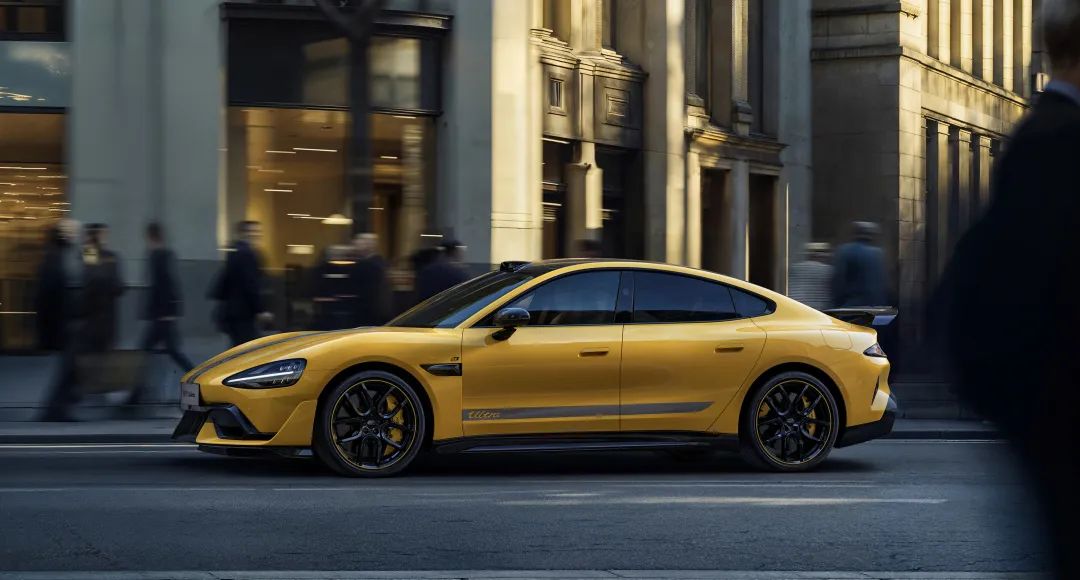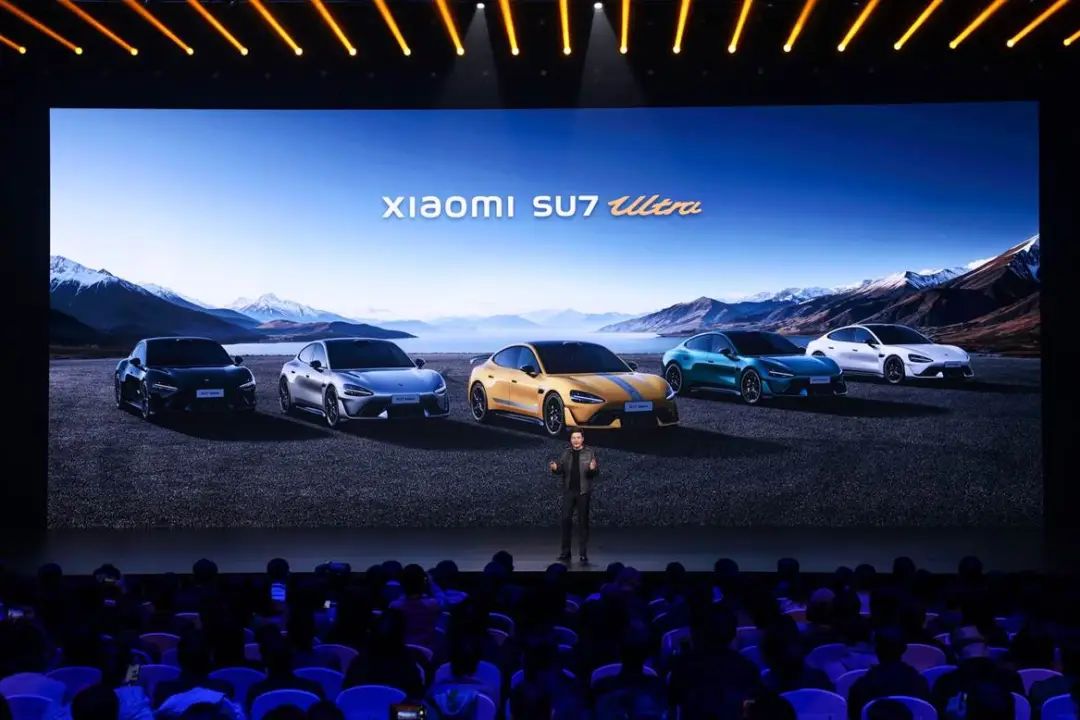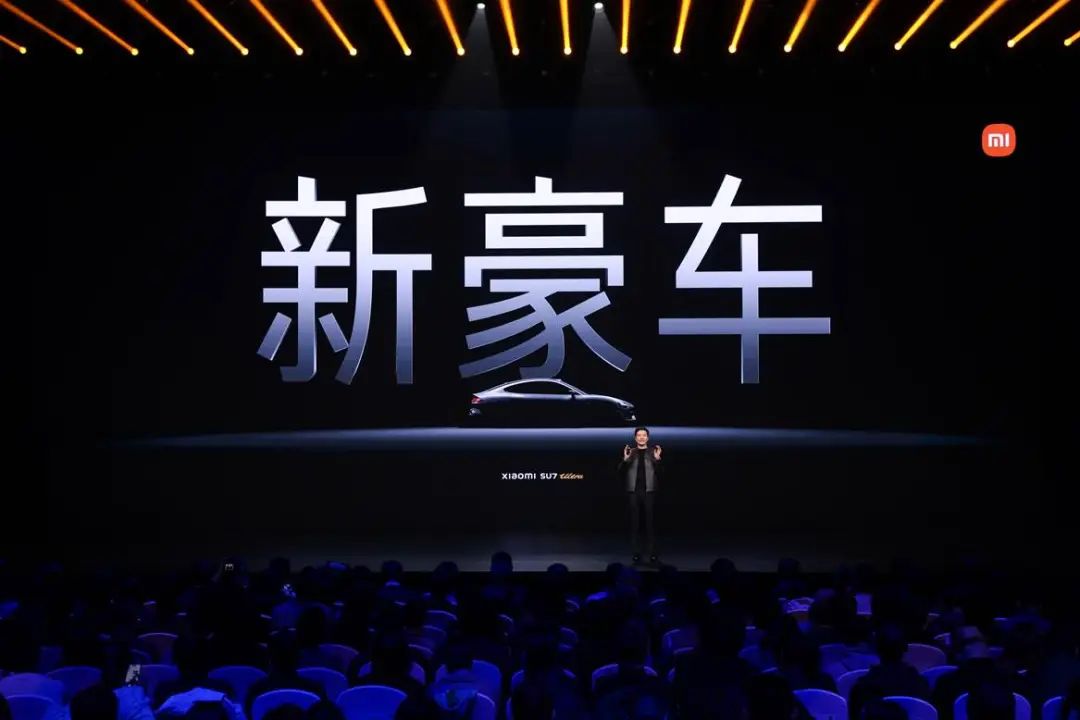China's New Luxury Car Phenomenon: Xiaomi SU7 Ultra Sells Out Annual Target in Less Than Three Days
![]() 03/05 2025
03/05 2025
![]() 506
506
Author | Zhang Maye
Editor | Dexin

On the evening of February 27, Xiaomi unveiled the SU7 Ultra with a starting price of 529,900 yuan, shocking the automotive industry.
This unexpectedly affordable price tag, contrasting sharply with the initial anticipation of a million-yuan supercar, created a buzz.
Xiaomi Auto has crafted a marketing marvel, achieving the remarkable feat of having many deem the SU7 Ultra "remarkably affordable" despite its half-million-yuan price point.
By the evening of March 2, Xiaomi announced that "the order lock-in volume of the SU7 Ultra has surpassed 10,000 units, accomplishing the annual sales target ahead of schedule." This achievement, occurring before the end of the first quarter of 2025, highlights the market's enthusiasm for the SU7 Ultra and underscores the shortcomings of many automotive brand operation teams.

I. An "Ultra" Cheaper Than Expected
On the second day after the SU7 Ultra's release, even airport taxi drivers were exclaiming, "Xiaomi's car is really cheap," underscoring the virality of its pricing.
Much of the car's appearance and specifications had been revealed prior to the launch, leaving the price as the ultimate suspense. Starting at 529,900 yuan, this pure electric high-performance vehicle, dubbed the "new luxury car," boasts a blistering 0-100 km/h acceleration time of 1.98 seconds and a top speed of 350 km/h. Coupled with supercar-level aerodynamic design, million-yuan-worth luxury interiors, and Xiaomi's signature intelligent technology, the SU7 Ultra signals Xiaomi's ambitious foray into the luxury market.
For those with more extreme track pursuits, the SU7 Ultra offers a "Nurburgring Limited Edition" priced at 814,900 yuan.
With a pre-sale price of 814,900 yuan, the announcement of the 529,900 yuan price tag caused a wave of shock both on-site and online. A colleague present at the event remarked that Lei Jun, Xiaomi's CEO, is adept at marketing psychology, noting that "mentioning the 814,900 yuan price first and then revealing the cheaper version would have had a vastly different impact."
II. Xiaomi's Definition of "New Luxury Car"

The SU7 Ultra differentiates itself by positioning as "performing on par with supercars, luxurious like BBA, and technologically on a par with Tesla."
Xiaomi's definition of a "new luxury car" encompasses design, performance, technology, and safety.
The design philosophy of the Xiaomi SU7 Ultra is "one side sporty, one side elegant," aiming to blend the tone of a supercar with the comfort of a family vehicle.

For instance, in terms of comfort, the SU7 Ultra's front seats feature seat ventilation, new massage functions, and graphene heating for both rows, amenities often overlooked in traditional sports cars.
The car is also generous with its use of materials, employing a substantial amount of carbon fiber that not only enhances the sporty feel but also effectively reduces weight. A total of 21 carbon fiber components covering 5.5m² are used throughout the car, including the hood, roof, and side skirts, resulting in a cumulative weight reduction of 87 kg. According to Lei Jun, it's "full of the smell of money."
Performance-wise, as the "fastest four-door mass-produced car on the surface," the SU7 Ultra is equipped with Xiaomi's self-developed super triple-motor system, comprising two V8s motors and one V6s motor, delivering a combined output of 1,548 horsepower. This is also the official mass production debut of Xiaomi's V8s motor.
The car's performance shines brightest on the racetrack. Prior to the launch, the SU7 Ultra completed lap time challenges at China's four major racetracks (Shanghai, Chengdu, Zhuzhou, Zhuhai), setting new records for four-door mass-produced cars. This year, it will also challenge the Nurburgring racetrack with a mass-produced model.
Technological prowess is Xiaomi's strength.
The Ultra comes standard with Xiaomi HAD intelligent driving, fully integrated with end-to-end large models, enabling intelligent driving capabilities across all scenarios, from driving to parking.
The parking function has also seen two significant updates: ultra-narrow parking space escape, which automatically parks out with a 50cm spacing and connects to the CNOA function; and roaming parking space search, which finds and parks into a new empty space when the target parking space is occupied.
Additionally, the cabin is equipped with Xiaomi Pengpai OS, offering an interconnected cabin experience with underlying integration, a comprehensive ecosystem encompassing people, cars, and homes, along with Xiaoai Assistant.
The SU7 Ultra has also been upgraded in terms of active safety, incorporating mis-acceleration suppression and omnidirectional low-speed collision prevention functions. In the event of a collision risk, pressing the accelerator pedal will elicit no response, as the system automatically inhibits vehicle acceleration.
The SU7 Ultra's positioning as a "street and race" vehicle represents a transformation of traditional supercar usage scenarios.
III. Chinese Brands Entering the Above-500,000-Yuan Luxury Car Market
Lei Jun boldly stated at the conference that in this era of domestic brand ascendancy, it's time to re-evaluate companies like Xiaomi.
In the 500,000-yuan market segment targeted by the SU7 Ultra, the landscape of traditional luxury cars is undergoing significant reconstruction.
According to data from the China Passenger Car Association, the market share of new energy vehicles priced above 300,000 yuan reached 28% in 2024, with a growth rate 1.7 times that of the overall market.
The market is demanding products that blend luxury with intelligent technology experiences.
However, traditional luxury brands such as Mercedes-Benz and BMW are encountering growth bottlenecks due to their shortcomings in intelligence, while Tesla, while maintaining technological leadership, falls short of domestic users' expectations of luxury due to its minimalist design.
In 2024, several Chinese new energy vehicle brands made breakthroughs in this price range:
- Lotus (now owned by Geely) sold around 10,000 units of the Eletre and Emira combined.
- Li Auto's MEGA, with a starting price of 529,800 yuan, sold over 10,000 units last year.
- Askey M9, priced from 469,800 yuan, sold over 150,000 units in a year, significantly impacting the markets previously dominated by Porsche and BBA.
The pricing strategy of the SU7 Ultra holds deeper implications. Prior to its launch, the SU7 Ultra was benchmarked against supercars and established credibility through Nurburgring racetrack challenges, coupled with a higher pre-sale price, giving the impression of a million-yuan model.
Surprisingly, Xiaomi is actually targeting the traditional territory of BBA, offering users who might have originally chosen BBA the psychological allure of buying a supercar at half the price, exceeding expectations.
Moreover, the combination of the 529,900 yuan standard version and the 814,900 yuan Nurburgring version not only lowers the entry barrier with the standard model but also elevates the brand image with the limited edition.
IV. Xiaomi Auto Moves Towards the High-End
The launch of the SU7 Ultra marks a milestone in Xiaomi's premiumization strategy and a pivotal lever in this historical process.
Since initiating its premiumization transformation in 2020, Xiaomi has been continuously transitioning from being perceived as cost-effective to technology premium, though the journey has not been without challenges.
Previous data from Counterpoint revealed that 65% of Xiaomi's premium smartphone users were upgraded from its mid-range users, with only 23% coming from other premium brands. Just before the release of the SU7 last year, Xiaomi's stock price was at its lowest point since its listing, reflecting market pessimism.
Over the past five years, Xiaomi has invested a cumulative R&D expenditure of 105 billion yuan, making significant strides in motors, batteries, intelligent driving systems, etc. The super motor V8s, CTB integrated battery technology, and HyperOS intelligent cockpit featured in the SU7 Ultra are tangible manifestations of this technological accumulation.
As Xiaomi's most expensive product to date, the SU7 Ultra serves as a technological beacon for premiumization. If it can secure a firm foothold, it will also facilitate deeper ecological synergy.
With the simultaneous release of the SU7 Ultra, the 15 Ultra smartphone, and the Mijia Central Air Conditioner Pro, Xiaomi's three-dimensional matrix of people, cars, and homes may mutually promote each other, enhancing users' ecological stickiness to the entire suite of products.
Despite a clear strategy, Xiaomi Auto's path to premiumization still faces real challenges.
Luxury car users are particularly sensitive to brand history and service systems. Xiaomi needs to break through its inherent cost-effective label and establish a high-end perception across channels, user operations, services, and other aspects.
The UltraClub membership system mentioned at the conference, offering users racetrack services, as well as the intelligent driving guarantee service launched jointly with insurance companies, indicate that Xiaomi is addressing these shortcomings.
Lei Jun once stated, "We will use 10 years to make Xiaomi Auto one of the top five automotive brands globally."
Xiaomi's first car, the SU7, has far exceeded sales expectations, and the SU7 Ultra has completed its annual target ahead of schedule. The next SUV model, the YU7, will be launched in May/June, and Xiaomi also has a larger and more expensive hybrid model in the pipeline.
Xiaomi Auto's sales target for this year is 300,000 units. If aiming for the top 5 automakers globally, Xiaomi Auto's actual ambitions are faster and more aggressive than what outsiders perceive.







